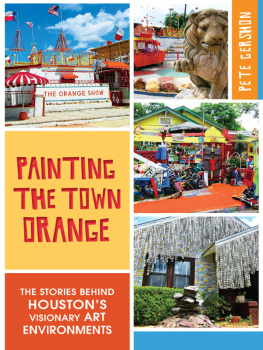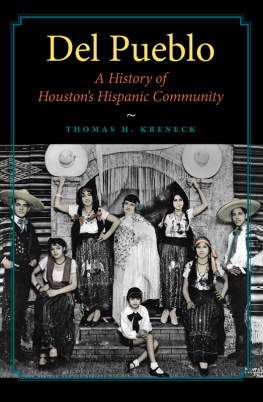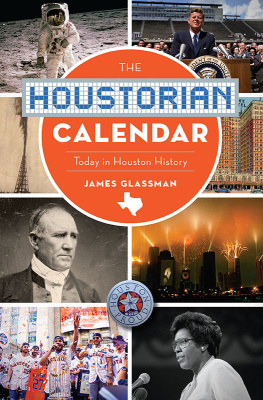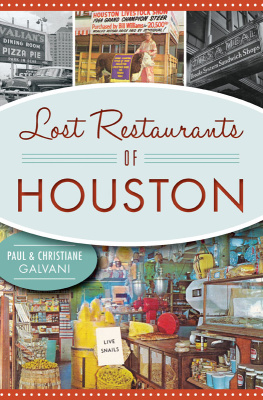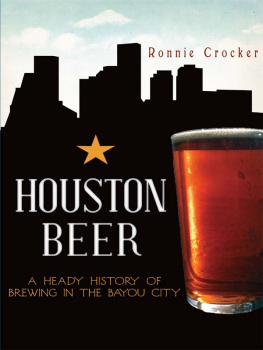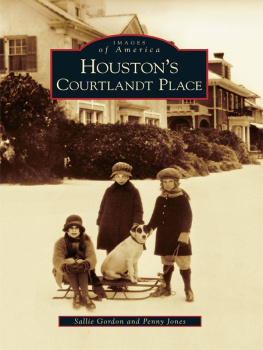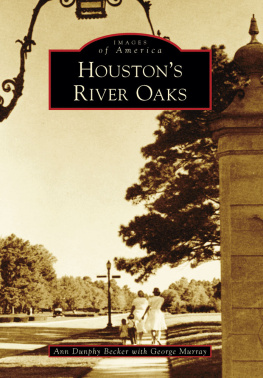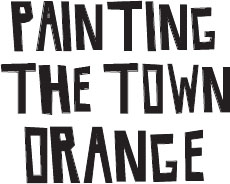
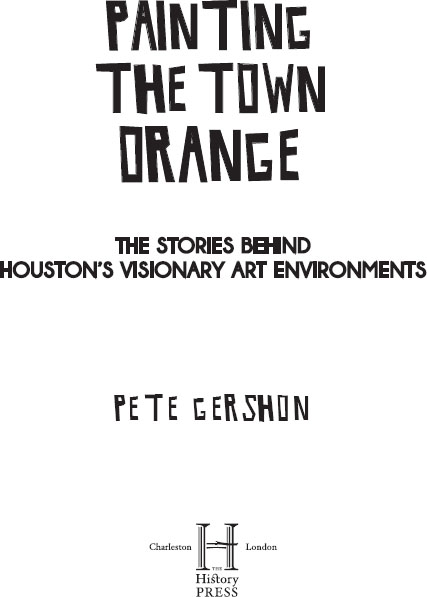
Published by The History Press
Charleston, SC 29403
www.historypress.net
Copyright 2014 by Pete Gershon
All rights reserved
All images from authors collection unless otherwise noted.
First published 2014
e-book edition 2014
ISBN 978.1.62584.972.4
Library of Congress Cataloging-in-Publication Data
Gershon, Pete.
Painting the town orange : the stories behind Houstons visionary art environments / Pete Gershon.
pages cm
print edition ISBN 978-1-62619-439-7 (paperback)
1. Environment (Art)--Texas--Houston. 2. Outsider art--Texas--Houston. I. Title.
N6535.H68G47 2014
709.7641411--dc23
2013050302
Notice: The information in this book is true and complete to the best of our knowledge. It is offered without guarantee on the part of the author or The History Press. The author and The History Press disclaim all liability in connection with the use of this book.
All rights reserved. No part of this book may be reproduced or transmitted in any form whatsoever without prior written permission from the publisher except in the case of brief quotations embodied in critical articles and reviews.
This book is dedicated to Cleveland Turner, the Flower Man, 19352013
CONTENTS
ACKNOWLEDGEMENTS
I am deeply indebted to countless individuals who provided crucial information and assistance and generally made me feel welcome in the course of writing this book. First and foremost I want to thank Barbara and Marks Hinton, who opened up their home and their personal archives to me as well as provided drinks, advice and encouragement. Whats more, Markss painstakingly researched visitors guide to the Beer Can House formed the basis for my understanding of the timeline of the sites construction. I must salute Rebecca Jacobs-Pollez for her remarkable research into the life of Jeff McKissack. Her graduate thesis on the Orange Show was an invaluable starting point and framework for studying his life story. Susanne and David Theis and the current Orange Show staffLynette Wallace, Wendy Schroell and Ruben Guevaraalso shared their time, observations and/or research, as did James Harithas, John Alexander, Sharon Kopriva, Dadi Wirz and Ty and Ginny Eckley. Thanks to Ken Penuel, chairman of economic development in Fort Gaines, who provided information that only someone from McKissacks hometown would know, and to David McKissack, for his extensive genealogical portrait of his family. Leonard DeGraaf, archivist at the Thomas Edison National Historical Park, and Peer Ravnan, special collections assistant at Mercer Universitys Tarver Library, dug around in their files for a complete stranger. And kudos to Bill Martin, Tom Sims, Ken Hudson and Joe Lomax for their foresight in bringing their tape recorders and video cameras to the Orange Show when Jeff McKissack was still alive. John and Barbara Siml, Dennis Hollander, James Kachtick, Ken Knisely and Julie Birsinger provided Beer Can House background, as did Ronnie Milkovisch, who also made some amazing custom bottle cap earrings for my wife. Thank you Cleveland Turner for letting me sit on your porch for hours and pepper you with strange questions. Jim Pirtle, Nestor Topchy, Rick Lowe, Cameron Armstrong and Jack Massing recounted the history of Notsuoh and Zocalo/TemplO for me. Dan Phillips and Stephanie Smither likewise brought the future of Smither Park to life. Legions provided background, context, and incidental memories or helped me sift through rumors and half-truths: the Reverend Bryan Taylor, Tom LaFaver, Geraldine Aramanda, Lisa Barkley, James Surls, Mel Chin, Bill Camfield, Mimi Kilgore, Robert Pearson, Glenn Carman, isuredid, Missy Bosch and others Im probably forgetting. Larry Harris, George Hixson, Ben DeSoto and Paul Kuntz shared incredible documentary photography. Of course I am grateful to the people at The History Press, especially Christen Thompson and Ryan Finn, for their help and their enthusiasm for the project. And then theres Marilyn Oshman, without whom there might not have been anything left for me to write about. Most of all, for support above and beyond the call of duty, I thank my parents, who sent me to college to learn how to do this (and not at all incidentally my writing professor, Michael Lesy, for kicking my butt daily there); my kids, who provided constant love and entertainment; and my beautiful wife, who has been an incomparable source of affection and encouragement over these past decades. Zaeza, I couldnt have done it without you.
INTRODUCTION
Founded in 1836 on the banks of Buffalo Bayou and named after the charismatic president of the Republic of Texas, Houston is the fourth-largest city in the United States. This sprawling, paved-over urban megalopolis is home base to the countrys energy industry, its busiest port, its largest concentration of healthcare and research facilities, professional teams from almost every sport, resident companies for all major performing arts from theater to ballet to opera, several internationally renowned museums, the worlds largest rodeo and livestock show and NASAs Johnson Space Center.
The city that boasts North Americas third-tallest skyline contorts in a constant state of demolition and construction, with charming bungalows and shotgun row houses daily giving way to cookie-cutter townhomes and bland commercial parks. In the countrys largest urban area without zoning regulations (defeated in citywide referendums in 1948, 1962 and 1993), property rights reign supreme, with the matter of historic preservation largely swept under the rug.
But tucked away within the citys Telephone Road Place subdivision, just to the east of the Gulf Freeway and less than seven miles south of the downtown skyscraper district, the visitor will find a blue-collar neighborhood left largely untouched since its construction in the 1940s and 50s. Take the Telephone Road exit off Interstate Route 45, follow the access road for four blocks and hang a right on Munger Street. Up and down this narrow road are rows of asbestos-sided cottages that retain a certain charm even if theyve clearly seen better days. Only the dull roar of the freeway disrupts this otherwise quiet thoroughfare that harkens back to a vanishing era in the citys history, hinting at a time before the Magnolia City became the Space City, before pollution began killing the trees and before John F. Kennedy sent a man to the moon.
Keep driving, and you wont miss it. On the left hand side of the street, colorful minarets of welded steel topped with waving flags peek over the tree line. Then, ornately filigreed grillworks come into view, exploding with an eye-popping conglomeration of brightly colored awnings, wagon wheels, parasols and whirligigs spread out over multiple open-air levels. Finally, set into its white stucco faade, gleaming in the midday Houston sun, you see the mosaic tiles that boldly proclaim the structures name. Youve by now slowed to a stop in front ofthe Orange Show.
In the words of its creator, a retired postman named Jefferson Davis McKissack, its the most beautiful show on earth, the most colorful show on earth, and the most unique show on earth. Beauty may be in the eye of the beholder, but on the latter points its difficult to argue. What the heck is this crazy thing? Amusement park? Monument? Sculpture? Official consulate to an artsy-fartsy bizarro world? Its all of these things and more.
McKissack, by all accounts a hale, hearty fellow with an easy smile and a perpetual twinkle in his eye, toiled on this one-tenth-acre plot from 1956 until its official public unveiling in 1979 shortly before his death, first as the American Tree Nursery and Worm Ranch and then, presumably as a ploy to meet women, a prospective beauty salon. But sometime in the mid-1960s, inspiration struck, and he amended his building permit by typing, Beauty salons went out of style and many closed down. Had a better ideaTHE ORANGE SHOW.
Next page
